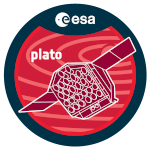Reliable evolutionary tracks are a backbone of stellar astrophysics; they are an essential ingredient of asteroseismic inference. While some progress has been made towards advanced 3D modeling of stellar interiors, 1D evolutionary modeling will remain the only tool to efficiently model the large flow of data form new space telescopes and ground based surveys. Hence, it is critical to quantify the uncertainties inherent to 1D evolutionary modeling and to compute extensive grids of models that can later be used as a starting point for detailed stellar modeling.
We present an extensive grid of stellar evolutionary tracks for medium mass stars computed with Modules for Experiments in Stellar Astrophysics (MESA). A grid covers stellar masses from 2 to 9 solar masses and a range of metallicties, from Z=0.0014 ([Fe/H]=-1) to Z=0.02 ([Fe/H]=+0.2), altogether 11 metallicity values. Models are computed form the Zero Age Main Sequence till the end of core Helium burning. For selected masses and metallicities models were computed assuming different microphysical setups, ie., models assume different scaled solar mixtures, different atmospheric boundary conditions, different variants of the Mixing Length Theory and different sets of nuclear reaction rates. This allows us to determine the uncertainties in the evolutionary tracks and in the parameters of the models (eg. luminosity, effective temperature, age, surface composition) at selected points in the evolution, due to uncertainties in the microphysics. These uncertainties are usually very low, provided mixing-length parameter is properly calibrated. The largest differences are observed for the highest metallicities and when considering different nuclear reaction rates.
The effects of various macrophysical processes were investigated for the full model grid. The effects include convective core overshooting during the main sequence evolution, convective envelope overshooting and mass-loss. The latter two factors become important after the main sequence and influence the core helium burning phase, which is studied in detail. Mass-luminosity relations are computed and compared with observational constraints. The emergence of the blue loops, their properties, in particular dependence on the overshooting parameters and on the adopted nuclear reaction rates are studied. The loop properties (eg. minimum mass to enter the instability strip, temperature and luminosity extent) vary with mass and metallicity in a non-linear way and strongly depend on core and envelope overshooting parameters. While, in general, the larger the convective core overshooting, the shorter the loop, and the larger the envelope overshooting, the longer the loop, the details depend on metallicity. The adopted nuclear reaction rates also affect the extent of the blue loops, in particular for higher metallicities.
A library of the computed evolutionary tracks will be made publicly available.

 PDF version
PDF version
